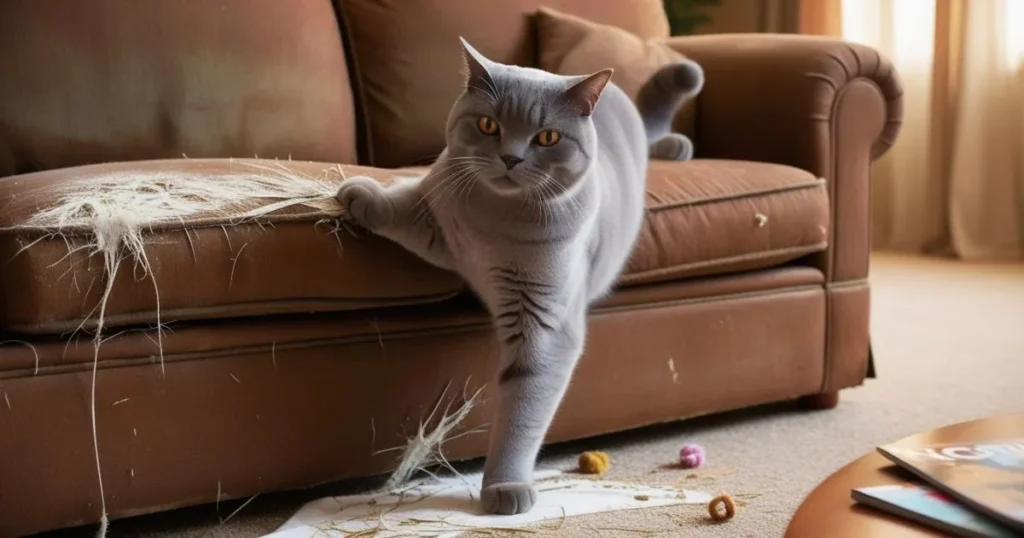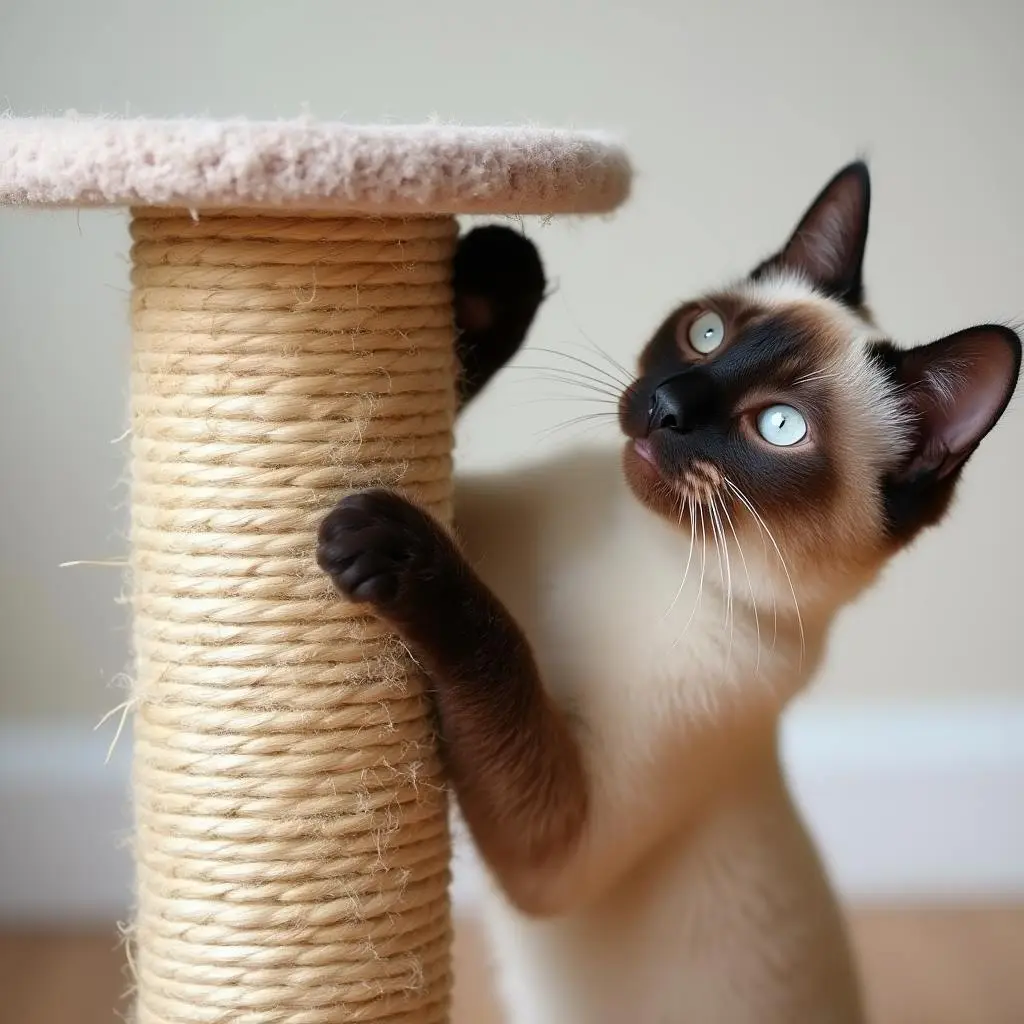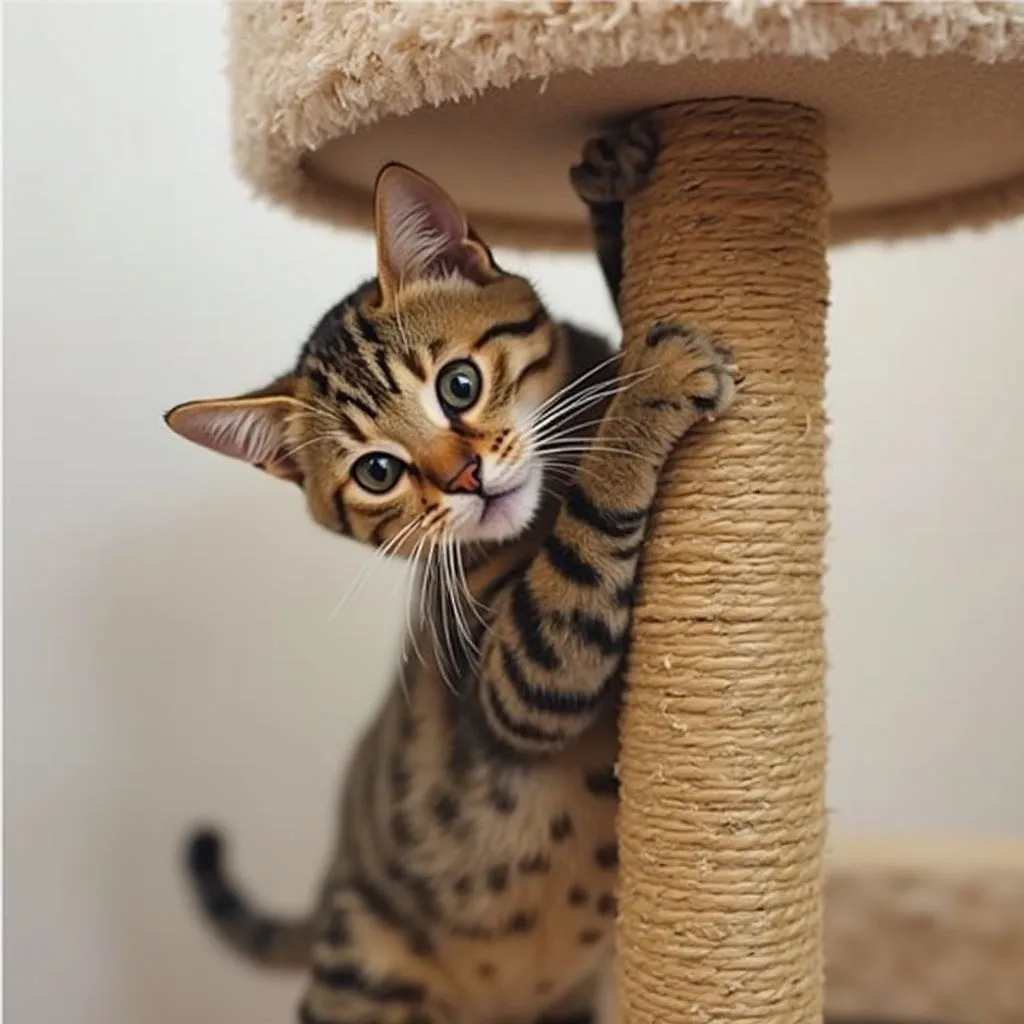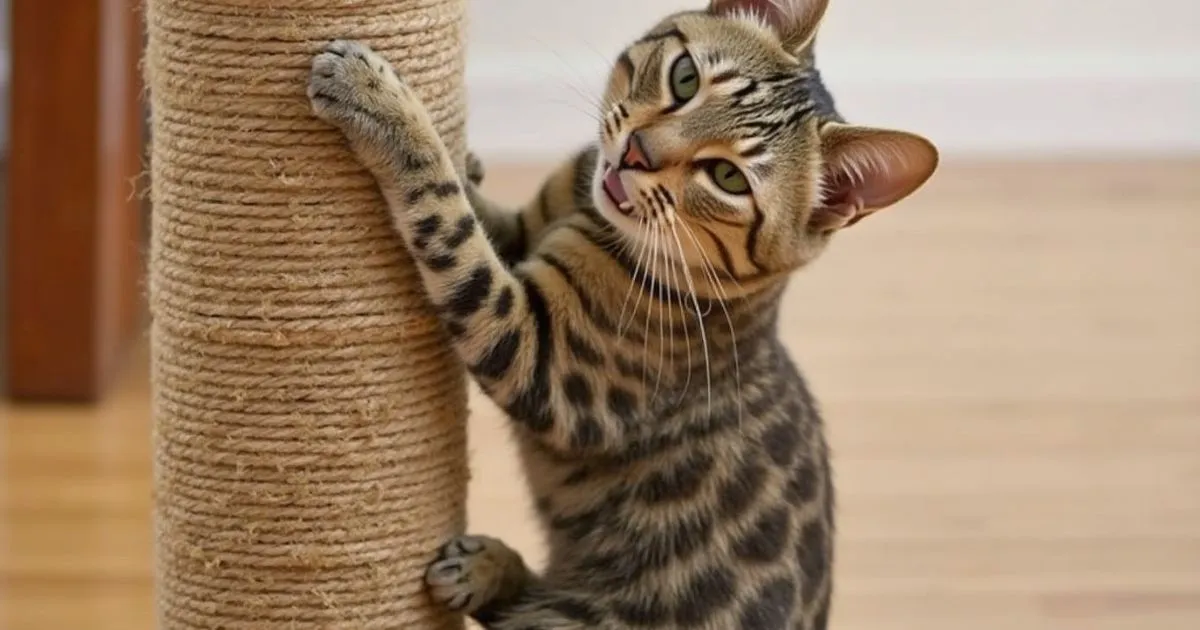Cats are curious and instinctive creatures, and one of their most essential habits is scratching. If you’re a cat owner, you’ve probably witnessed your feline companion pawing away at furniture or carpet. While this behavior can be frustrating, it’s perfectly natural and plays a critical role in a cat’s well-being. Enter the cat scratching post-a must-have item that serves as both a solution for your furniture woes and a source of joy for your furry friend.
In this comprehensive guide, you’ll discover everything you need to know about cat scratching posts, from their benefits to choosing the right one for your cat’s specific needs.
Table of Contents
What is a Cat Scratching Post?
A scratching post serves a purpose beyond being mere decor; it’s an essential item that satisfies your cat’s instinct to scratch and fully extend their body. Typically made from materials like sisal rope, carpet, or corrugated cardboard, scratching posts provide a suitable surface for cats to dig their claws into without damaging your home.
Whether you opt for a sleek, modern design or a multi-functional cat tree, scratching posts come in all shapes and sizes. Some are tall and freestanding, while others are horizontal or wall-mounted.
Benefits of Cat Scratching Posts

If you’re still on the fence about getting a scratching post, consider these advantages:
- Preserves Your Furniture: Cats scratch to keep their claws sharp, and without an appropriate outlet, they’ll turn to your sofa, curtains, or carpet. A scratching post redirects this behavior.
- Supports Nail Health: Regular scratching helps your cat shed old claw sheaths, promoting healthy nail growth.
- Promotes territorial marking: Cats use the scent glands in their paws to leave their unique scent on surfaces. When they scratch, they’re leaving behind both visual and scent markers to establish ownership.
- Provides Physical and Mental Stimulation: Scratching allows your cat to stretch their muscles, relieving tension and offering a satisfying way to expend energy.
- Reduces Stress and Anxiety: For cats, scratching can be a comforting and stress-relieving activity.
Types of Cat Scratching Posts
There’s no one-size-fits-all scratching post. Consider these commonly preferred types:
- Vertical Cat Trees
These tall, freestanding structures offer multiple perches, platforms, and scratching surfaces. They’re perfect for active cats who enjoy climbing and lounging at different heights. - Flat Scratching Boards
Simple yet effective, flat scratching boards lie horizontally on the floor. They’re often made of corrugated cardboard and are great for cats who prefer scratching surfaces similar to carpet or rugs. - Wall-Mounted Scratching Posts
Ideal for homes with limited floor space, wall-mounted posts provide a vertical scratching surface while staying out of the way. - Interactive Scratching Posts
Designed to engage your cat’s playful side, these posts feature built-in toys, dangling objects, or even moving parts. They combine entertainment with practicality.
Important factors to keep in mind when selecting a cat scratching post
Not all scratching posts are created equal. To ensure you’re picking the right one for your cat, keep these features in mind:
- Material: Sisal rope is a top choice for its durability and texture, but some cats prefer softer materials like carpet or corrugated cardboard.
- Size and Height: Ensure the post is tall enough for your cat to fully stretch out. A large cat may need a sturdier, taller post than a kitten.
- Stability: A wobbly post won’t inspire confidence. Look for a solid base to prevent tipping.
- Texture: Cats like surfaces they can grip easily. The texture should mimic tree bark or other rough surfaces.
- Style: While your cat’s preferences come first, there’s no harm in choosing a post that complements your home’s décor.
Tips for selecting the perfect scratching post for your cat
Every cat is unique, and understanding your pet’s habits is crucial to finding the perfect scratching post. Here’s how to refine your choices:
- Observe Their Behavior
Does your cat prefer scratching the armrest of your couch or the corner of a rug? Cats that favor vertical surfaces might love a tall cat tree, while those who scratch horizontally may prefer flat boards. - Consider Their Size and Age
Larger cats require more robust scratching posts, while kittens may benefit from softer, smaller ones that are easier to tackle. - Think About Placement
Position the scratching post in a spot where your cat frequently hangs out. A post hidden in an unused corner is less likely to get attention. - Experiment and Adjust
It may take a bit of trial and error to find the right post. If your cat isn’t interested in one, try a different material or design.
Getting your cat to engage with the scratching post
Getting your cat to embrace their scratching post can take some coaxing, but it’s well worth the effort. Here’s how you can encourage them:
- Strategic Placement: Position the scratching post near furniture your cat frequently scratches. This makes it a convenient alternative.
- Use Catnip: Many cats are drawn to the scent of catnip. Sprinkling it on the scratching surface can make the post irresistible.
- Reinforce good behavior: by giving your cat treats and praise every time they use the scratching post. This helps reinforce the behavior.
- Demonstrate Usage: Try lightly dragging your own fingers along the scratching surface to pique your cat’s curiosity.
Common Mistakes to Avoid
Even the most well-intentioned pet owners can make mistakes when it comes to scratching posts. Avoid these common pitfalls:
- Choosing the Wrong Size: A post that’s too small or short won’t meet your cat’s stretching needs.
- Smooth Surfaces: Cats need texture to grip and scratch effectively. A post with a smooth surface won’t cut it.
- Poor Placement: If the post is in a hard-to-reach spot, your cat is unlikely to use it.
- Lack of Variety: Over time, your cat may grow bored. Providing multiple scratching surfaces helps keep things interesting.
Cat Scratching Post Maintenance


- Regularly examine the post: for any signs of damage or deterioration. Replace damaged parts as necessary.
- Clean Periodically: Use a damp cloth or vacuum to remove dust, fur, and debris.
- Rotate Surfaces: If your post has multiple sides or surfaces, rotate them to keep things fresh.
- Replace When Needed: A well-loved scratching post may eventually need a full replacement. Look for signs that your cat is losing interest or the post is too worn to be effective.
Like any household item, scratching posts require upkeep to remain effective and appealing:
Cat Scratching Post Reviews and Recommendations
Before making a purchase, it’s wise to do some research. Feedback from fellow cat owners offers helpful information about a product’s longevity and overall quality. Here are some tips for finding the best scratching post for your cat:
- Seek Recommendations: Ask fellow cat owners or consult your veterinarian for suggestions.
- Read Customer Reviews: Look for products with high ratings and detailed feedback.
- Consider the Brand: Established brands often offer better customer service and warranties.
- Check for Guarantees: A warranty can provide peace of mind and ensure you’re getting a quality product.
Conclusion
A high-quality cat scratching post is more than just an accessory; it’s a vital tool for your cat’s physical and mental health. By understanding your cat’s unique needs and preferences, you can select a scratching post that keeps them happy while protecting your home from damage.
Investing in the right scratching post will not only save your furniture but also enhance your bond with your feline friend. Happy scratching!
FAQ: Cat Scratching Post Training
Why won’t my cat use the scratching post?
If your cat isn’t using the scratching post, there could be a few reasons. Make sure the post is in a location your cat feels comfortable with, and try different types of materials, such as sisal or cardboard. Some cats also need more encouragement, so try showing them how to use it or adding some catnip to make the post more enticing.
How long will it take for my cat to use the scratching post?
Training times vary from cat to cat. Some may use the post immediately, while others may take several weeks. Stay patient and consistent, and your cat will eventually catch on.
Can I train my cat to use a scratching post if it’s already scratching furniture?
Yes! You can definitely retrain your cat. Place the scratching post near the furniture they scratch and use positive reinforcement to encourage them to scratch the post instead.
Should I punish my cat for scratching the wrong places?
No, punishment is not effective for training cats. Positive reinforcement works much better. Encourage your cat with rewards when they use the scratching post, and calmly guide them back if they begin scratching other areas.

